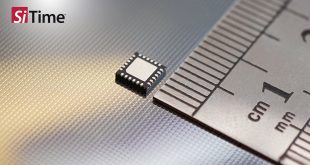As 2018 draws to a close, engineers at award-winning electronics design consultancy ByteSnap Design have been wondering what the year ahead holds for the EV battery sector. Here’s the company’s forecast…
Electric vehicle battery sizes are getting smaller
 Although EVs with larger batteries tend to dominate the trade press, counter-intuitively, we predict an increasing market for EVs with small batteries for the foreseeable future – primarily for urban driving.
Although EVs with larger batteries tend to dominate the trade press, counter-intuitively, we predict an increasing market for EVs with small batteries for the foreseeable future – primarily for urban driving.
We also expect that 2019 will see the start of a drive which sees small battery BEVs decreasing in size over the coming decades. Here’s why:
- The average trip distance in the UK is 7.04 miles; an average commuting journey is 11.2 miles and an average car drives 6500 to 7500 miles. This means that, if we assume a recharge only happens at home and we allow for a 100 per cent margin, an urban BEV only needs a range of 45 miles. Also, note: 7500/365 = just 20 miles.
- EV owners generally charge opportunistically. So, as the number of charge points increases, the requirement for BEVs to support a whole day’s journey will reduce by a factor of two or so, meaning that an urban BEV range of 23 miles will become the norm.
- Batteries are going to drop in price; especially as the BEV market explodes and better battery technology appears (currently increasing at about 15 per cent energy density per year). The simplicity of BEVs will drive cost reductions in all areas and an obvious example is the batteries themselves, since a smaller battery means a lighter car, which results in additional cost savings in the car chassis, brakes, charging tech, motor power etc.
- Vehicle-to-grid (V2G) technology will work well with small battery BEVs, primarily because household power consumption is going down and will continue to do so in the future. Even a BEV with a 25 mile capacity will be, at about 4.5miles per KWh, just 5.5KWh and this should be enough to provide about 30 per cent of household electricity consumption.
- Small capacity BEVs reduce the rate of churn in charging technology and will make it easier to balance out charging demand. For example, an average 11.2 mile journey would require 11.2/4.5 = 2.5KWh or 21 minutes to charge at a domestic level of 7KW.
- Autonomous BEV taxis will need most of the same characteristics of these urban BEVs – for example, when such a taxi is booked, the user will provide the intended route and thus a small battery BEV will be directed to the user). In addition, there will be a large market for autonomous two person taxis, which because of additional weight reductions makes small battery BEVs even more viable.
Now, we’re not predicting that all BEVs will be like this. Rather that we see, for second cars or autonomous taxis, mini- or MicroBEVs, a large market potential in a number of areas as the technology and infrastructure improves. For most people, long-distance journeys tend to be occasional; therefore households will either have second, larger BEVs or hire BEV taxis.
We expect in 2019 to see really strong growth in EV (BEV) sales. They have been widely production constrained and – given the poor market in the rest of the automotive sector and the cut back in allowances on PHEVs – BEVs will surge.
Relating to the wider electric vehicle market, in 2019 we expect:
Subsidies to step down a gear
Governments have been subsidising electric vehicle sale prices to stimulate the market. We believe 2019 will see an easing back of theses government subsidies as demand for EVs continues to wildly outstrip supply.
Fast chargers to forge ahead
Look forward to petrol stations becoming “energy supply stations” as they install fast chargers alongside their petrol pumps. This also means they have to provide something for the drivers to do during charging – be it drinking coffee, watching TV or shopping. The acquisition by Shell and BP of EV charger suppliers is part of this strategy.
Tighter regulation around charger quality
We anticipate greater regulation of chargers in 2019 – with more quality and feature standards placed upon them. In addition, we believe chargers will ultimately be required to allow load-control, ensuring the Grid can cope with high demand.
 CIE Components in Electronics
CIE Components in Electronics



